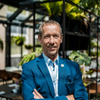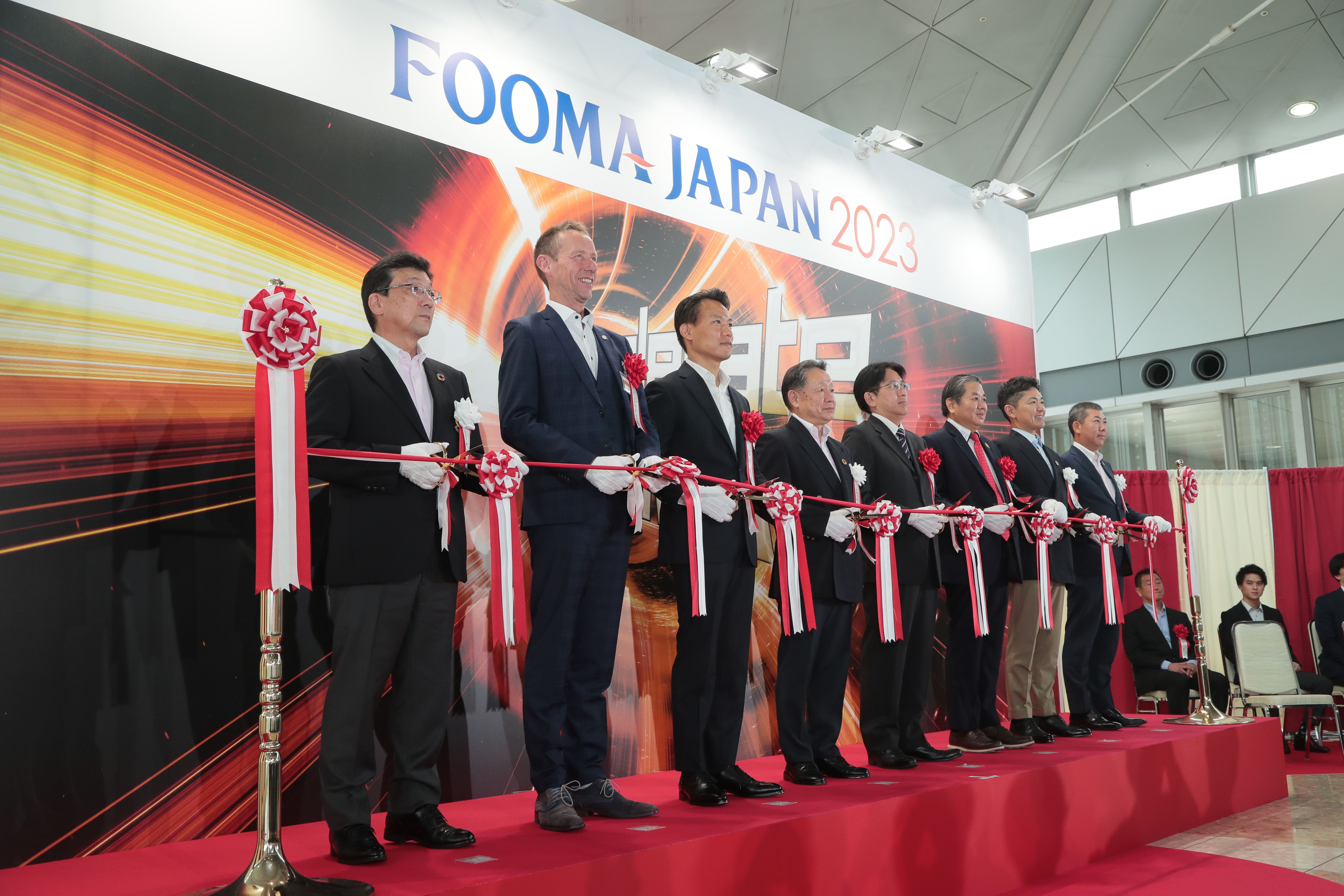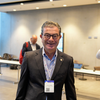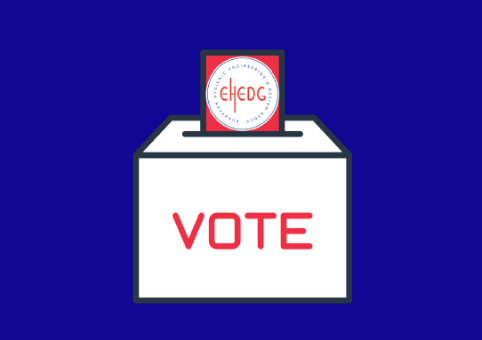Introducing the new EHEDG President Hein Timmerman

After having served EHEDG for many years in the EHEDG Advisory and Executive Boards, and chairing the EHEDG Sub-Committee Product Portfolio, the EHEDG Regional Section Belgium and various EHEDG Working Groups, Diversey Global Sector Specialist Food and Beverage Hein Timmerman follows up EHEDG President Emeritus Ludvig Josefsberg. Hein Timmerman takes on his presidency in turbulent times of economic and environmental challenges, and new legislative and technological opportunities. In this article, Hein shares his views on EHEDG in his new role as EHEDG President.
When and how did you become involved with EHEDG?
‘Hygienic design has intrigued me right from the start of my first job at Alfa-Laval in 1986. After its founding in 1989, EHEDG quickly became the leading resource for expertise in hygienic engineering and design, and I wanted to be part of this community. Over the years, my drive to contribute to EHEDG grew even stronger, also because of the many friendships that were established by collaborating in this EHEDG community. My active engagement with EHEDG also helped me to gain many new insights, and a clear understanding of the food safety needs within the food and beverage industry.’
Your predecessor started reshaping the EHEDG organisation. What’s next?
‘EHEDG is growing steadily and sees the need to adapt its organisational structure accordingly, in order to offer more support for faster, more harmonised guideline development, to develop new certification schemes and excellent membership support processes. Establishing a new EHEDG Head Office team was part of this adaptation process to effectively support EHEDG Company Members, EHEDG Sub-Committees and EHEDG Working Groups.’
Considering your previous longstanding chairmanship of the EHEDG Sub-Committee Product Portfolio, how do you envision the further development of EHEDG Guideline Development, EHEDG Certification and EHEDG Training and Education offerings?
‘In 2022, under the leadership of EHEDG President Ludvig Josefsberg, EHEDG defined focus points to further improve its membership offerings related to guideline development, certification and training and education. Now it’s time to fill in these gaps and to start developing the content that is necessary to do so. In line with our ambition to upscale our certification offerings, EHEDG already introduced a new EHEDG Open Process Certification scheme, and new processes to support working groups in developing more process-oriented guidelines in a more standardised format. These steps are also necessary to increase the accessibility, user-friendliness and applicability of the EHEDG membership services, and to further increase the EHEDG Membership value.’
What is your strategic view on the future development of EHEDG?
‘I believe that EHEDG should, in the first place, continue to focus on the value of the EHEDG membership offerings, and to do so, we need to listen carefully to the practical needs of our members and then offer support accordingly. It is then up to the EHEDG leadership teams, EHEDG Sub-Committees and EHEDG Working Groups to align their activities with these practical needs. The basis of the EHEDG membership value is created in an active exchange of expertise, perspectives and best industry practices amongst our members and subject matter experts in the working groups and committees.
In light of all the new developments that are taking place in the space of hygienic engineering and design, we need to acknowledge that EHEDG cannot do all by itself. We need to establish new partnerships, based on our current position of offering fundamental guidance, a framework on top of which our partners can roll out more services on a practical industry level. I particularly see opportunities for new collaborations across the farm-to-fork supply chain related to developments like the adoption of the GFSI Hygienic Design Benchmarking Requirements by Certification Program Owners.’
How do you envision the further global expansion of EHEDG?
‘With the support of EHEDG members across the world, the EHEDG Sub-Committee Regional Development managed to establish a global structure of EHEDG Regional Sections. These introduce EHEDG in their respective regions, for example by organising EHEDG Training sessions and by representing EHEDG at regional events. During the first years after a new EHEDG Regional Section is established, the global EHEDG organisation offers financial support, with the intention to enable the regions to become financially self-sufficient.’
How are you planning to manage that?
‘The levels of activity differ significantly between the various EHEDG Regional Sections, so EHEDG introduced a regional financial support system that is directly linked to the regional activities. This way, we can apply KPI’s and direct funds more effectively. For a societal foundation like EHEDG, it is important to display full accountability for all spendings, as well as to make clear leadership choices, for example on whether we should primarily focus on growing the EHEDG membership base, or on reaching out to and engaging more professionals within existing EHEDG member companies. These are topics of an ongoing discussion within EHEDG that need to be resolved.’
How do you define your leadership goals?
‘At EHEDG, we jointly define what our goals are, and how to advance these goals effectively, for example by developing new guidance that enables companies to optimise their food safety, food quality, productivity and sustainability results. The EHEDG guidance framework results from enabling our expert community to reach consensus on what good and effective hygienic engineering and design actually is. That’s why it is also important to include food processors in our working groups, so that they bring in their end-user perspective. We can only define what good hygienic design is if our guidance is strongly rooted in the daily real life industry practice. And by developing relevant guidance, we also raise the awareness of the importance and benefits of hygienic design throughout the food and food equipment industry.’
How would you describe your leadership style?
‘EHEDG is a foundation that thrives thanks to the unpaid contributions of many volunteers who have a passion for hygienic engineering and design and a heart for the good cause the EHEDG stands for. This demands for a leadership style that is geared towards motivating people to reach consensus based on our common understanding of how technology works out in real industry settings. In my former career and my current daily work at Diversey, I learned that effective problem solving and troubleshooting can only be achieved when you start out with an open dialogue between experts. Sharing knowledge and practical experiences introduces a clarity and way forward to meet even the most complex challenges, and I consider myself a leader who likes to first listen, then create an organisation that allows everyone to contribute opinions, and then find a common ground to make decisions and move forward together, as a community, for the benefit of all.’
Thank you, and congratulations
‘I thank all EHEDG members for their trust, and I thank Diversey for its continual support that allowed me to contribute to EHEDG in the past, and to take on this task. I am proud to be part of this EHEDG Community, and honoured to be asked to contribute to this wonderful global expert community in hygienic engineering and design.’






